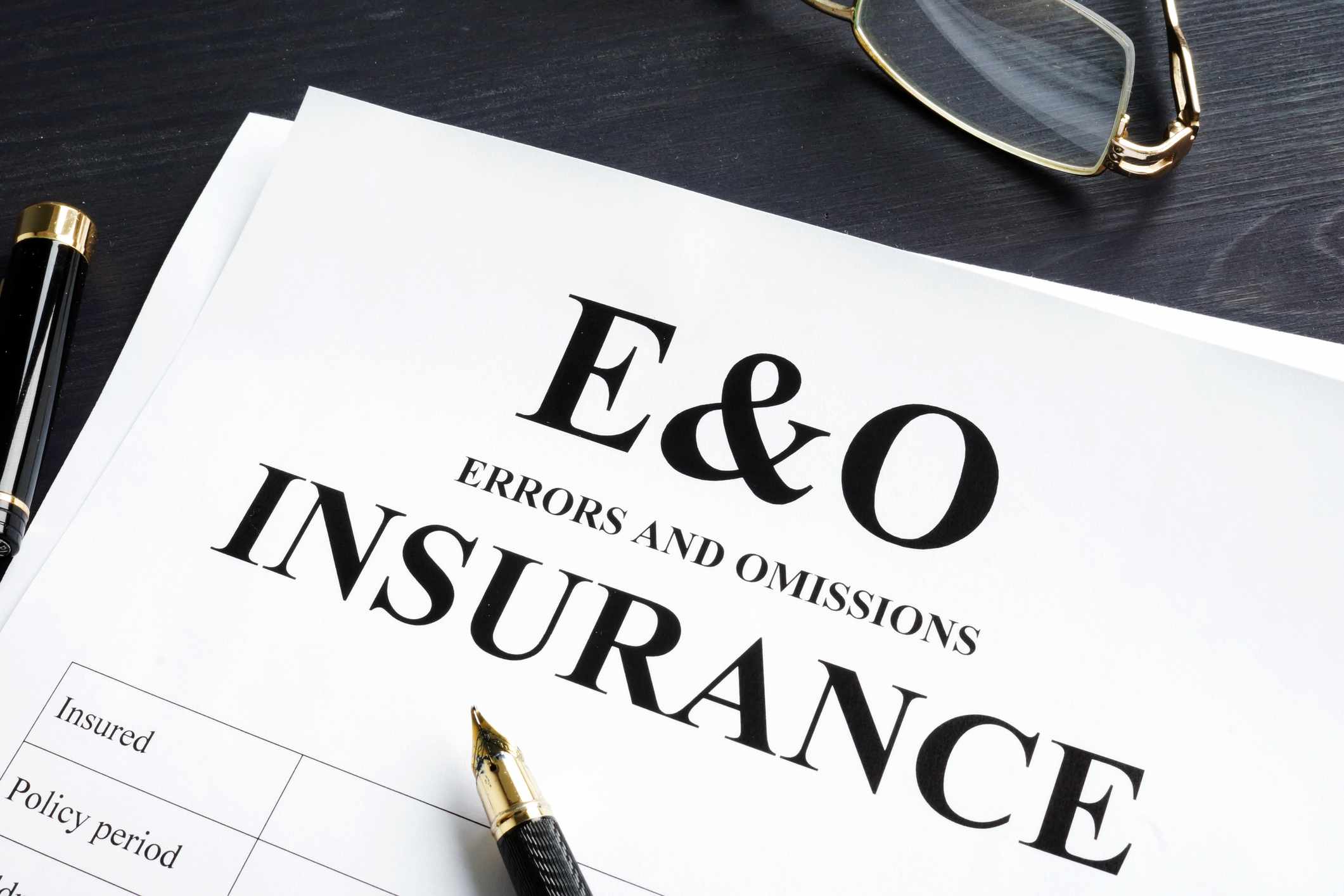

Finance
How To Start A Financial Literacy Program
Published: December 23, 2023
Learn how to start a finance-focused financial literacy program and empower individuals with essential money management skills. Enhance financial knowledge and unlock a brighter future.
(Many of the links in this article redirect to a specific reviewed product. Your purchase of these products through affiliate links helps to generate commission for LiveWell, at no extra cost. Learn more)
Table of Contents
- Introduction
- Step 1: Identify the Target Audience
- Step 2: Determine the Program Goals
- Step 3: Develop a Curriculum
- Step 4: Recruit and Train Volunteers
- Step 5: Secure Funding and Resources
- Step 6: Find a Suitable Location
- Step 7: Promote the Program
- Step 8: Implement the Financial Literacy Program
- Step 9: Monitor and Evaluate the Program
- Conclusion
Introduction
Welcome to the world of financial literacy! In today’s complex financial landscape, understanding how money works and making wise financial decisions is crucial for individuals of all ages. Unfortunately, many people lack the knowledge and skills needed to navigate the financial challenges they face.
A financial literacy program is a valuable initiative that aims to educate individuals about personal finance, budgeting, saving, investing, and other important financial topics. By providing participants with the necessary knowledge and skills, these programs empower individuals to make informed decisions, manage their money effectively, and achieve financial well-being.
Starting a financial literacy program can be a rewarding endeavor, as it allows you to make a positive impact on the lives of others and contribute to the financial health of your community. Whether you are a financial professional, educator, or simply passionate about helping others, this article will guide you through the process of starting a successful financial literacy program.
Before diving into the practical steps, it is important to reflect on why financial literacy matters. In today’s society, financial decisions have far-reaching consequences that can impact various aspects of life, including education, housing, retirement, and even mental health. By equipping individuals with financial literacy skills, we can empower them to take control of their finances, reduce financial stress, and build a solid foundation for the future.
Financial literacy programs not only benefit individuals but also have a positive ripple effect on society as a whole. When individuals have a strong understanding of personal finance, they are more likely to make sound financial decisions, avoid debt traps, and contribute to the economic growth of their communities.
Moreover, financial literacy programs can help address the glaring disparities in financial knowledge and access to financial resources. Studies have shown that marginalized communities, such as low-income households and minority groups, often face greater financial barriers and are disproportionately affected by financial challenges. By offering financial education programs that are accessible and tailored to the specific needs of these communities, we can work towards a more inclusive and equitable financial system.
Now that we understand the importance and potential impact of financial literacy programs, let’s dive into the practical steps of how to start one. From identifying the target audience to implementing and evaluating the program, each step is essential for creating a comprehensive and impactful financial literacy initiative.
Step 1: Identify the Target Audience
The first step in starting a financial literacy program is to identify the target audience. This will help you tailor the program to meet the specific needs and preferences of the individuals you want to reach.
Consider who would benefit the most from financial education in your community. Is it high school students, college graduates, senior citizens, low-income families, or a specific demographic group? Understanding the characteristics and needs of your target audience will guide your program’s content, delivery methods, and outreach strategies.
Conduct research and gather data to determine the financial literacy gaps within your target audience. Look for information on their financial challenges, knowledge gaps, and areas where they may need the most support. This can be done through surveys, interviews, focus groups, or by examining existing research and studies.
Additionally, consider the unique circumstances and cultural context of your target audience. For example, if you are targeting low-income families, you may want to focus on basic money management skills, debt reduction strategies, and accessing financial resources. If you are aiming to educate college students, topics such as student loans, budgeting for living expenses, and building credit may be more relevant.
Remember to involve the target audience in the planning process. Seek their input and feedback to ensure that the program’s content and delivery methods align with their needs and preferences. This can be done through focus groups, community forums, or by establishing an advisory board consisting of representatives from the target audience.
By identifying the target audience and understanding their specific needs and preferences, you will be able to design a financial literacy program that addresses their unique challenges and helps them achieve their financial goals. This targeted approach will increase the program’s effectiveness and engagement, ultimately leading to a greater impact on the participants’ financial well-being.
Step 2: Determine the Program Goals
Once you have identified the target audience, the next step in starting a financial literacy program is to determine the program goals. What do you hope to achieve through this initiative? Clearly defined goals will guide the development and implementation of your program.
Start by asking yourself what outcomes you want to see in the participants. Do you want them to gain a basic understanding of personal finance concepts? Are you aiming to help them develop specific skills like budgeting or investing? Or perhaps your goal is to empower individuals to make informed financial decisions and achieve long-term financial stability.
It is important to set realistic and measurable goals. This allows you to track the program’s progress, evaluate its impact, and make necessary adjustments along the way. Consider specific indicators of success, such as the number of participants who demonstrate improved financial knowledge, increased savings rates, reduced debt levels, or positive changes in financial behavior.
Additionally, take into account the timeframe for achieving these goals. Are you aiming for short-term outcomes, such as immediate behavior change, or are you focused on long-term impact and sustained financial well-being? Understanding the time horizon will help you design appropriate program activities and measure success accordingly.
It is also worth considering the broader impact of your program. Financial literacy does not operate in a vacuum; it intersects with various aspects of life. Reflect on how your program can contribute to other societal goals, such as reducing poverty, narrowing the wealth gap, or promoting economic empowerment and social inclusion.
By clearly defining the program goals, you provide a vision for your financial literacy initiative and ensure that all program elements align with those objectives. Your goals will guide the selection of curriculum materials, the structure of the program, and the evaluation metrics used to assess its impact. Ultimately, having clear goals will enable you to create a focused and purpose-driven financial literacy program.
Step 3: Develop a Curriculum
The development of a comprehensive and engaging curriculum is a crucial step in starting a financial literacy program. The curriculum serves as the backbone of your program, providing the necessary content and structure to educate participants about various financial topics.
When developing the curriculum, consider the needs and interests of your target audience. Start by identifying the key financial topics that are most relevant to their lives. These may include budgeting, saving and investing, debt management, credit scores, insurance, taxes, and financial goal setting.
Structure the curriculum in a logical and sequential manner, starting with foundational concepts and gradually progressing to more advanced topics. This allows participants to build their financial knowledge and skills progressively, ensuring a solid understanding of the basics before delving into more complex subjects.
Include a variety of teaching methodologies and resources to cater to different learning styles. This may include interactive activities, case studies, real-life examples, group discussions, guest speakers, and online tools. Make the curriculum engaging and interactive to keep participants actively involved in the learning process.
Consider incorporating practical exercises and simulations that allow participants to apply their knowledge in real-world scenarios. This hands-on approach fosters active learning and helps participants develop practical skills that they can implement in their daily lives.
Ensure that the curriculum is accessible and easy to understand. Use clear and concise language, avoiding jargon and complex financial terms. Break down complex concepts into digestible pieces and provide ample opportunities for participants to ask questions and seek clarification.
Another important aspect of curriculum development is reviewing and selecting appropriate resources and materials. Look for reputable sources such as financial literacy books, online educational platforms, and interactive tools that align with your program goals and curriculum content. These resources can supplement your curriculum and provide participants with additional learning materials.
Lastly, remain open to feedback and continuous improvement. Regularly assess and refine the curriculum based on participant feedback, evaluation results, and emerging trends in the financial landscape. Adapt the curriculum to address new developments, technological advancements, and changes in legislation that may impact personal finance.
By developing a well-structured and engaging curriculum, you provide participants with the necessary knowledge and skills to navigate the complex world of personal finance. A thoughtful and comprehensive curriculum will empower individuals to make informed financial decisions and set them on a path towards financial well-being.
Step 4: Recruit and Train Volunteers
One of the key components of a successful financial literacy program is having dedicated and well-trained volunteers who can effectively deliver the curriculum and support the participants. In this step, you will focus on recruiting and training volunteers to ensure the smooth running of your program.
Start by defining the roles and responsibilities of the volunteers. Determine the specific tasks they will be responsible for, such as leading sessions, facilitating discussions, providing one-on-one guidance, or assisting with program logistics. Clarify the time commitment expected from volunteers and any necessary qualifications or skills they should possess.
Develop a volunteer recruitment strategy to attract individuals who are passionate about financial literacy and align with the mission of your program. Reach out to local colleges, universities, community organizations, and professional networks to spread the word about your volunteer opportunities. Engage with your target audience to invite individuals who have personal experience or expertise in the financial topics covered in the program.
Once you have identified potential volunteers, conduct a thorough screening process to ensure their suitability for the role. This may include interviews, reference checks, background checks, and verifying their qualifications or experience. It is important to create a safe and trustworthy environment for the participants, so take the time to select volunteers who are reliable, empathetic, and trustworthy.
Provide comprehensive training to your volunteers to equip them with the knowledge and skills needed to effectively deliver the curriculum. This can include training sessions, workshops, online modules, or mentorship opportunities. Ensure that volunteers have a solid understanding of the program goals, curriculum content, teaching methodologies, and any necessary guidelines or protocols.
Empower volunteers to connect and share experiences with one another through regular meetings, support groups, or online platforms. Creating a supportive community among volunteers fosters collaboration, provides a space for them to seek guidance or advice, and enhances their overall effectiveness in delivering the program.
Continuously support and mentor your volunteers throughout the duration of the program. Offer ongoing training opportunities to expand their knowledge and keep them updated on the latest financial trends and resources. Regularly check in with volunteers to address any challenges or concerns they may have and provide them with the necessary support to carry out their responsibilities effectively.
Recognize and appreciate the efforts of your volunteers by acknowledging their contributions and expressing gratitude. Celebrate their successes, host volunteer appreciation events, or provide certificates of recognition. Showing appreciation not only boosts morale but also encourages volunteers to continue their dedication and commitment to the program.
By recruiting and training dedicated volunteers, you ensure that your financial literacy program is delivered with passion and expertise. The volunteers will play a crucial role in engaging and supporting the participants, making a meaningful impact on their financial knowledge and well-being.
Step 5: Secure Funding and Resources
To sustain and expand your financial literacy program, securing adequate funding and resources is essential. In this step, you will focus on identifying funding sources and acquiring the necessary resources to support the program’s operations.
Start by conducting thorough research to identify potential funding opportunities. Look for grants, sponsorships, donations, or partnerships with local businesses, financial institutions, community organizations, or government agencies. Explore both public and private funding sources that align with the goals and target audience of your program.
Prepare a compelling case for support by clearly articulating the need for financial literacy education and the anticipated impact of your program. Highlight the benefits to the community, such as increased financial stability, reduced financial stress, and economic empowerment. Tailor your proposal to the priorities and objectives of potential funders, demonstrating how your program aligns with their mission and vision.
Consider diversifying your funding sources to reduce reliance on a single funding stream. This can help mitigate risks and ensure the sustainability of your program. Explore avenues for individual donations, crowdfunding campaigns, or corporate sponsorships to supplement larger funding sources.
In addition to financial resources, identify the necessary materials and equipment needed to support the program delivery. This may include textbooks, workbooks, presentation tools, computers, software, or other technological resources. Seek partnerships or in-kind donations from local community organizations, educational institutions, or businesses to acquire these resources at a reduced cost.
Form partnerships and collaborations with other organizations or community stakeholders that have a shared interest in financial literacy. This can not only provide additional resources but also expand the reach and impact of your program. Partnering with local schools, libraries, or community centers can provide access to facilities and help attract participants.
Develop a detailed budget that clearly outlines the program costs and projected expenses. This will demonstrate sound financial management and accountability to potential funders. Consider both one-time startup costs and ongoing operational expenses to ensure the financial sustainability of your program.
Maintain open and regular communication with your funders and partners. Provide progress updates, share success stories, and demonstrate the impact of their support. Building strong relationships with funders can lead to continued support and potential referrals to other funding sources.
Finally, explore opportunities for revenue generation through fee-based services, such as workshops or consulting services. This can help diversify your funding streams and reduce reliance on external funding sources.
By securing funding and resources, you ensure the continued operation and growth of your financial literacy program. Access to financial resources and materials will allow you to provide high-quality education to participants and achieve long-term sustainability for your initiative.
Step 6: Find a Suitable Location
When starting a financial literacy program, finding a suitable location is crucial for creating a conducive learning environment and ensuring accessibility for participants. The location you choose should align with the needs and preferences of your target audience, as well as adhere to any budgetary constraints you may have.
Consider the demographics and characteristics of your target audience when selecting a location. If you are focusing on low-income families, consider locating the program in a community center or a local school to maximize accessibility. For college students, partnering with universities or hosting sessions on campus may be more convenient.
Ensure that the location has adequate space to accommodate the number of participants, as well as any necessary equipment or materials for program delivery. Look for venues with classrooms, meeting rooms, or multipurpose spaces that can be configured to accommodate various group sizes and activities.
Accessibility is key to ensure the participation of individuals from different backgrounds and abilities. Consider the location’s proximity to public transportation options, as well as the availability of parking facilities. If your target audience includes individuals with disabilities, ensure that the location is wheelchair-accessible and provides any necessary accommodations.
Take into account the overall atmosphere and ambience of the location. Ideally, the space should be welcoming, comfortable, and conducive to learning. Look for venues that have natural lighting, adequate ventilation, and a layout that promotes engagement and interaction among participants.
Budgetary considerations are also important when selecting a location. Evaluate the cost of renting or securing the space and consider any additional expenses such as equipment rentals, maintenance fees, or insurance requirements. Explore options for cost-sharing or partnerships with organizations that have existing facilities that align with your program’s objectives.
Don’t limit your search to traditional venues. Think outside the box and consider unconventional spaces such as libraries, community centers, religious institutions, or even online platforms for virtual delivery. The location should reflect the values and culture of your program while also being accessible and affordable.
Once you have identified potential locations, visit each one to assess its suitability. Consider factors such as the layout, available amenities, safety measures, and the overall impression of the space. Talk to the facility manager or owner to discuss logistics, availability, and any specific requirements or restrictions.
Remember to consider the flexibility and scalability of the location. As your program grows, you may need to accommodate larger group sizes or additional activities. Think long-term and choose a location that can adapt and expand with your program’s needs.
By finding a suitable location, you create a positive and engaging learning environment for participants in your financial literacy program. A well-chosen location enhances accessibility, promotes interaction, and contributes to the overall success of your program.
Step 7: Promote the Program
Once you have developed your financial literacy program, it’s crucial to promote it effectively to attract participants and generate awareness within your target audience. Promotion plays a key role in increasing program enrollment and ensuring its success. Here are some steps to effectively promote your program:
1. Define your target audience: To effectively promote your program, you need to understand who your target audience is. Identify the demographics, interests, and characteristics of the individuals you want to reach. This will help you tailor your promotional efforts accordingly.
2. Craft a compelling message: Develop a clear and concise message that highlights the benefits and value of your program. Emphasize how it addresses the specific financial needs and challenges of your target audience. Use persuasive language and compelling stories to engage potential participants.
3. Utilize multiple channels: Reach your target audience through various communication channels. This can include traditional methods such as flyers, posters, and community bulletin boards. Additionally, leverage digital platforms such as social media, email marketing, website/blog, and online community forums to expand your reach.
4. Establish partnerships: Collaborate with local schools, community organizations, financial institutions, and other relevant stakeholders to promote your program. These partnerships can provide opportunities for cross-promotion, resource sharing, and reaching a wider audience through their networks.
5. Engage with local media: Leverage local media outlets such as newspapers, radio stations, and TV channels to amplify your program’s reach. Compose a compelling press release, reach out to journalists, and offer to provide expert insights on financial literacy-related topics. Media coverage can significantly boost program visibility and credibility.
6. Host informational sessions or workshops: Organize free information sessions or workshops to introduce the program to potential participants. Offer valuable insights and practical tips during these sessions to entice attendees to enroll in the program. Encourage participants to spread the word to their friends, family, and peers.
7. Capitalize on word-of-mouth: Encourage satisfied participants or their parents, friends, and family members to share their positive experiences with others. Word-of-mouth is a powerful tool for generating interest and building trust in your program.
8. Leverage social media: Create engaging content on social media platforms like Facebook, Instagram, LinkedIn, or YouTube to share program updates, success stories, and helpful financial tips. Encourage participants and supporters to share your posts with their networks.
9. Offer incentives or referral programs: To incentivize participation and referrals, consider offering rewards or recognition for individuals who enroll in the program or refer others. This can motivate participants and supporters to actively promote your program.
10. Leverage community events: Participate in local community events, fairs, or workshops to introduce your program to a broader audience. Set up booths, distribute promotional materials, and engage with attendees to create awareness and encourage enrollment.
Remember to monitor and evaluate the effectiveness of your promotional efforts and make necessary adjustments along the way. Continuously seek feedback from participants, track enrollment numbers, and measure the impact of different marketing channels to optimize your promotional strategies.
By effectively promoting your financial literacy program, you will attract participants, raise awareness, and ensure the success of your initiative. A well-executed promotion strategy will help you reach and empower individuals to take control of their financial future.
Step 8: Implement the Financial Literacy Program
After careful planning and preparation, it’s time to implement your financial literacy program and bring it to life. This step involves executing the curriculum, engaging participants, and delivering a high-quality educational experience. Here’s how to effectively implement your program:
1. Be organized and prepared: Ensure that all necessary logistics, materials, and resources are in place before the program begins. Set up the physical space, gather teaching materials, and familiarize yourself with the curriculum’s content and structure. Being organized will facilitate a smooth implementation process.
2. Establish a positive learning environment: Create an inclusive and welcoming atmosphere that promotes active engagement and learning. Foster a safe space where participants feel comfortable asking questions, sharing their experiences, and engaging in group discussions. Encourage open dialogue and respect for diverse perspectives.
3. Follow the curriculum: Stick to the curriculum you developed, but also be flexible and responsive to the needs and interests of the participants. Make adjustments as necessary based on their feedback, learning progress, and emerging financial trends. Keep a balance between covering the essential financial topics and allowing for interactive and participatory learning experiences.
4. Deliver engaging lessons: Use a variety of teaching methods to keep participants engaged and actively involved in the learning process. Incorporate hands-on activities, group discussions, case studies, guest speakers, and interactive technology tools. Leverage real-life examples and practical exercises to help participants apply their knowledge to real-world financial situations.
5. Provide personalized support: Offer individualized guidance and support to participants who may require extra assistance. Address their specific questions or concerns and provide resources, referrals, or additional one-on-one sessions when needed. Tailor your approach to meet the diverse needs and learning styles of the participants.
6. Encourage active participation: Engage participants in discussions, group activities, and problem-solving exercises. Encourage them to share their thoughts, ask questions, and contribute their own experiences. Foster a collaborative learning environment where participants can learn from each other’s insights and perspectives.
7. Build connections and networks: Facilitate opportunities for participants to connect with each other, share experiences, and build financial support networks. Encourage collaboration, peer learning, and the exchange of ideas beyond the formal sessions. Cultivate a sense of community and support among program participants.
8. Evaluate and adjust: Continuously assess and evaluate the effectiveness of the program throughout its implementation. Gather feedback from participants, volunteers, and other stakeholders to understand what is working well and identify areas for improvement. Use this feedback to make necessary adjustments to the curriculum, teaching methods, or program structure.
9. Maintain communication: Keep participants informed and engaged by providing regular updates, reminders, and any changes to the schedule or curriculum. Use various communication channels such as email, online platforms, newsletters, or group messaging to stay connected with participants and ensure they are aware of program activities and resources.
10. Celebrate achievements: Recognize and celebrate the accomplishments of participants throughout the program. Highlight their progress, achievements, and positive financial behaviors. Consider organizing a graduation ceremony, awarding certificates of completion, or facilitating opportunities for participants to showcase their newfound knowledge and skills.
By effectively implementing your financial literacy program, you create a valuable educational experience for participants. Stay dedicated to your program’s goals, remain flexible to adapt as needed, and continuously strive to improve the learning outcomes and overall participant experience.
Step 9: Monitor and Evaluate the Program
Monitoring and evaluation are crucial steps in ensuring the ongoing success and effectiveness of your financial literacy program. Regular assessment allows you to gather feedback, measure outcomes, and make informed decisions to enhance the program’s impact. Here’s how to effectively monitor and evaluate your program:
1. Set evaluation objectives: Determine the specific objectives and outcomes you want to measure. These may include changes in participants’ financial knowledge, skills, behavior, or attitudes towards personal finance. Establish clear and measurable indicators of success that align with your program goals.
2. Collect data: Gather data through various methods such as surveys, tests, interviews, focus groups, or observation. Design evaluation tools that capture relevant information to assess the program’s impact. Ensure confidentiality and anonymity when collecting sensitive data.
3. Continuous monitoring: Continuously monitor program activities, attendance rates, participant engagement, and feedback throughout the program’s duration. Track any challenges or issues that arise and address them promptly. Regularly communicate with volunteers, participants, and stakeholders to stay informed about their experiences and perspectives.
4. Evaluate against goals: Compare the actual outcomes with the predetermined program goals and indicators. Analyze the data collected to see if the program is effectively achieving its intended outcomes. Identify any gaps or areas for improvement that may require adjustment to program delivery, curriculum, or support services.
5. Seek participant feedback: Encourage participants to provide feedback on their experiences, satisfaction with the program, and suggestions for improvement. Consider conducting surveys, focus groups, or individual interviews to gain a deeper understanding of their perspectives. Use their insights to make necessary adjustments to enhance program effectiveness.
6. Engage stakeholders: Consult with volunteers, participants, funders, and partners to gather their input on the program’s strengths, weaknesses, and areas for improvement. Engage them in program evaluations and seek their perspectives on program impact and sustainability. They may provide valuable insights and ideas for program refinement.
7. Adapt and improve: Use the monitoring and evaluation findings to make data-driven decisions and implement necessary changes. Reflect on the feedback received and consistently refine and improve the program based on the data and insights collected. Continuously assess and update the curriculum, teaching methods, resources, or support services to ensure ongoing program effectiveness.
8. Share results and successes: Communicate the program’s achievements, outcomes, and impact to stakeholders, funders, and the broader community. Share success stories, testimonials, and data-driven evidence to showcase the value and importance of your financial literacy program. These success stories can serve as powerful marketing tools to attract future participants and funders.
9. Continuous learning culture: Foster a culture of continuous learning within your program. Encourage volunteers and participants to share their knowledge, experiences, and insights with one another. Provide opportunities for professional development and ongoing training to keep volunteers up to date with industry developments and best practices in financial literacy education.
10. Regular program evaluation: Conduct periodic program evaluations to assess the long-term impact and overall effectiveness of your program. Evaluate the program’s sustainability, scalability, and potential for expansion to reach a wider audience. Consider revisiting the program goals and indicators periodically to ensure they remain relevant.
By monitoring and evaluating your financial literacy program, you can ensure its ongoing improvement and impact. Regular assessment and data-driven decision-making will help you refine your program, enhance outcomes, and ensure its long-term success.
Conclusion
Starting a financial literacy program is a rewarding endeavor that empowers individuals to make informed financial decisions and improve their financial well-being. By following the nine essential steps outlined in this guide, you can create a comprehensive and impactful program that addresses the specific needs of your target audience.
From identifying the target audience to implementing the program and evaluating its impact, each step plays a critical role in the success of your financial literacy initiative. By understanding the unique needs of your target audience, setting clear goals, developing a tailored curriculum, recruiting and training volunteers, securing funding and resources, finding a suitable location, promoting the program, and effectively implementing and monitoring the program, you can make a lasting impact on the financial knowledge and behavior of participants.
The journey of starting a financial literacy program requires dedication, flexibility, and a commitment to continuous improvement. It is a collaborative effort that involves the engagement of volunteers, participants, funders, and community stakeholders. By fostering a supportive learning environment, creating partnerships, and embracing feedback, you can refine and strengthen your program over time.
Remember that the impact of your financial literacy program extends beyond the individuals directly involved. Financially empowered individuals contribute to stronger and more resilient communities, fostering economic growth and reducing social inequalities. By equipping individuals with the knowledge and skills to navigate the complex world of personal finance, you are helping create a more financially literate society.
As you embark on this journey, keep in mind the power of financial literacy to transform lives. Celebrate the achievements, both big and small, of the participants in your program. Spread the word about the positive impact your program is making to attract more participants and generate support from the community.
Starting a financial literacy program is a significant undertaking, but with proper planning, dedication, and a focus on continuous improvement, you can make a lasting difference in the financial well-being of individuals and communities. So, take the first step and embark on the fulfilling journey of empowering others with financial knowledge and skills.














